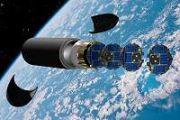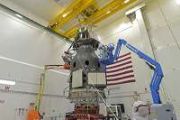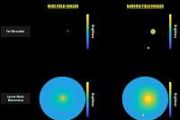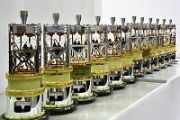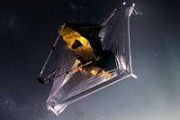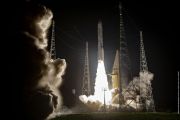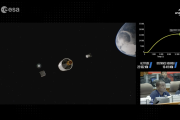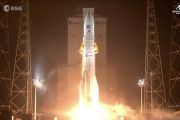
Copernical Team
Galileo tribute unveiled as Juice says 'Farewell, Europe'
 A commemorative plaque celebrating Galileo's discovery of Jupiter's moons has been unveiled on ESA's Jupiter Icy Moons Explorer, Juice. The spacecraft has just completed its final tests before departing Toulouse, France, for Europe's Spaceport to count down to an April launch.
As part of the final preparations a commemorative plaque was mounted on the spacecraft as a tribute to Italian ast
A commemorative plaque celebrating Galileo's discovery of Jupiter's moons has been unveiled on ESA's Jupiter Icy Moons Explorer, Juice. The spacecraft has just completed its final tests before departing Toulouse, France, for Europe's Spaceport to count down to an April launch.
As part of the final preparations a commemorative plaque was mounted on the spacecraft as a tribute to Italian ast NASA's Lucy Mission Suspending Further Solar Array Deployment Activities
 NASA's Lucy mission team has decided to suspend further solar array deployment activities. The team determined that operating the mission with the solar array in the current unlatched state carries an acceptable level of risk and further deployment activities are unlikely to be beneficial at this time. The spacecraft continues to make progress along its planned trajectory.
Shortly after th
NASA's Lucy mission team has decided to suspend further solar array deployment activities. The team determined that operating the mission with the solar array in the current unlatched state carries an acceptable level of risk and further deployment activities are unlikely to be beneficial at this time. The spacecraft continues to make progress along its planned trajectory.
Shortly after th NASA, Boeing teams achieve milestone ahead of crewed flight
 NASA and Boeing recently completed a full start to finish integrated mission dress rehearsal for the company's CST-100 Starliner flight with astronauts to the International Space Station, which is scheduled to launch in April 2023.
The Crew Flight Test, or CFT, will launch NASA astronauts Barry "Butch" Wilmore and Suni Williams on Starliner - atop a United Launch Alliance Atlas V rocket -
NASA and Boeing recently completed a full start to finish integrated mission dress rehearsal for the company's CST-100 Starliner flight with astronauts to the International Space Station, which is scheduled to launch in April 2023.
The Crew Flight Test, or CFT, will launch NASA astronauts Barry "Butch" Wilmore and Suni Williams on Starliner - atop a United Launch Alliance Atlas V rocket - Buzz Aldrin, second man on the Moon, marries on 93rd birthday

Legendary Apollo 11 astronaut Buzz Aldrin, the second person to set foot on the Moon, said he had married his longtime girlfriend on Friday, his 93rd birthday.
Aldrin and Anca Faur, executive vice president of Buzz Aldrin Ventures, were wed in a private ceremony.
"On my 93rd birthday... I am pleased to announce that my longtime love Dr. Anca Faur & I have tied the knot," Aldrin tweeted along with pictures of himself and Faur, who is reportedly 63.
"We were joined in holy matrimony in a small private ceremony in Los Angeles & are as excited as eloping teenagers."
According to her LinkedIn profile, Faur earned a doctorate in chemical engineering from the University of Pittsburgh in 1996 and had previously worked for Union Carbide and Johnson Matthey before joining Buzz Aldrin Ventures. She had also served as treasurer for the California Hydrogen Business Council.
Aldrin's three previous marriages ended in divorce.
The US astronaut is the last surviving member of the Apollo 11 mission, during which he and Neil Armstrong become the first people to set foot on the Moon, on July 20, 1969.
Exploring the outer solar system takes power: Here's a way to miniaturize nuclear batteries for deep space
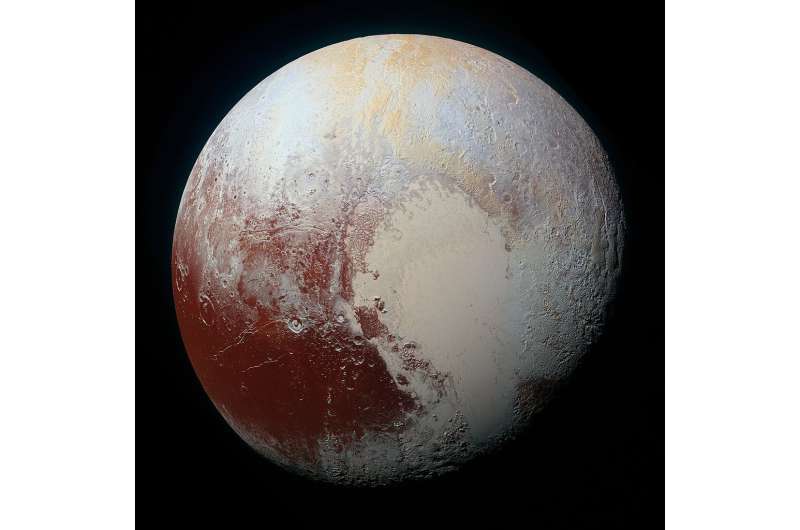
As science and technology advance, we're asking our space missions to deliver more and more results. NASA's MSL Curiosity and Perseverance rovers illustrate this fact. Perseverance is an exceptionally exquisite assemblage of technologies. These cutting-edge rovers need a lot of power to fulfill their tasks, and that means bulky and expensive power sources.
Visitor to a galaxy
 Image:
Visitor to a galaxy
Image:
Visitor to a galaxy Watch ESA Director General annual press briefing 2023

Join our start-of-the-year press briefing looking ahead at 2023, with ESA Director General Josef Aschbacher and ESA Directors. They’ll present the next steps of Agenda 2025, looking at new missions, science, space safety and commercialisation of space.
Tune in to #ESAwebTV on 23 January, from 08:00 GMT/09:00 CET, to watch live.
More on ESA’s Vision and Agenda25.
Hubble captures minor asteroid crossing image of background galaxies
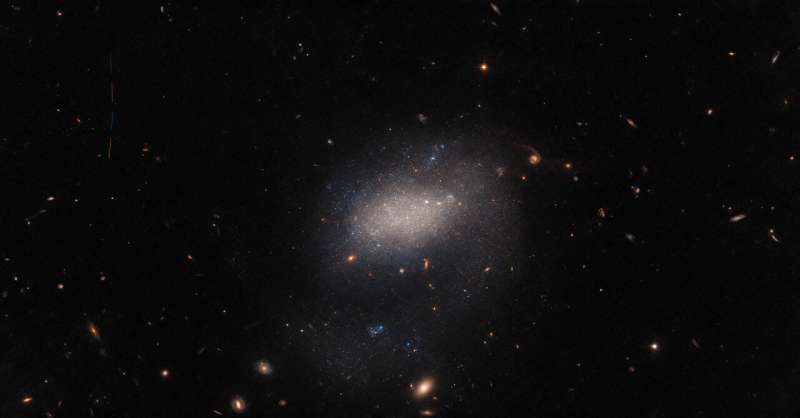
A host of astronomical objects throng this image from the NASA/ESA Hubble Space Telescope. Background galaxies ranging from stately spirals to fuzzy ellipticals are strewn across the image, and bright foreground stars much closer to home are also present, surrounded by diffraction spikes. In the center of the image, the vague shape of the small galaxy UGC 7983 appears as a hazy cloud of light. UGC 7983 is around 30 million light-years from Earth in the constellation Virgo, and is a dwarf irregular galaxy—a type thought to be similar to the very earliest galaxies in the universe.
This image also conceals an astronomical interloper. A minor asteroid, only a handful of kilometers across, can be seen streaking across the upper left-hand side of this image. The trail of the asteroid is visible as four streaks of light separated by small gaps. These streaks of light represent the four separate exposures that were combined to create this image, the small gaps between each observation being necessary to change the filters inside Hubble's Advanced Camera for Surveys.
First Native American woman in space steps out on spacewalk
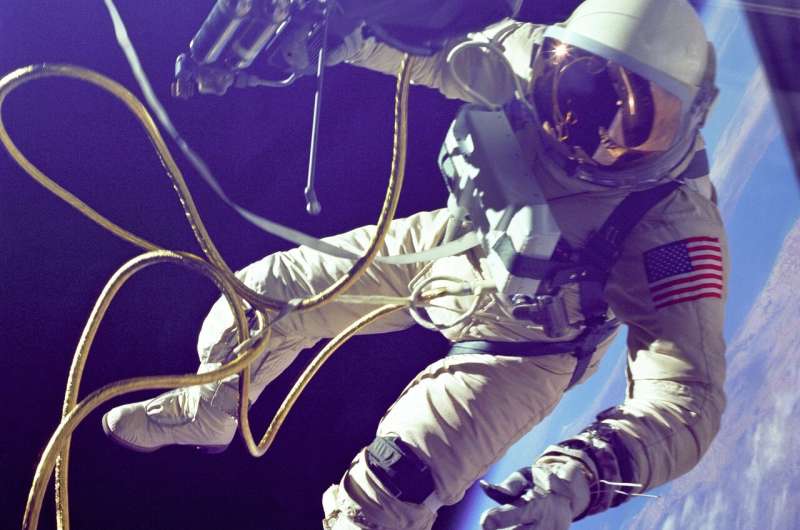
The first Native American woman in space ventured out on a spacewalk Friday to prep the International Space Station for more solar panels.
NASA astronaut Nicole Mann emerged alongside Japan's Koichi Wakata, lugging an equipment bag. Their job was to install support struts and brackets for new solar panels launching this summer, part of a continuing effort by NASA to expand the space station's power grid.
Mann, a Marine colonel and test pilot, rocketed into orbit last fall with SpaceX, becoming the first Native American woman in space. She is a member of the Wailacki of the Round Valley Indian Tribes in Northern California.
Wakata, Japan's spaceflight leader with five missions, also flew up on SpaceX. He helped build the station during the shuttle era.
Friday was the first spacewalk for both.
The pair will depart the space station in another month or so.
© 2023 The Associated Press. All rights reserved. This material may not be published, broadcast, rewritten or redistributed without permission.
Astronaut Tim Peake assumes ESA ambassadorial role





